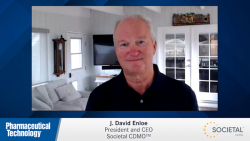
OR WAIT null SECS
- About Us
- Advertise
- Contact Us
- Editorial Info
- Editorial Advisory Board
- Do Not Sell My Personal Information
- Privacy Policy
- Terms and Conditions
© 2025 MJH Life Sciences™ , Pharmaceutical Technology - Pharma News and Development Insights. All rights reserved.
Is the US Facing a Pharmaceutical Manufacturing Gap?
Last week, FDA Commissioner Margaret A. Hamburg testified before the House Committee on Energy and Commerce, Subcommittee on Health to outline the agency’s case for supporting the fifth authorization of the Prescription Drug User Fee Act (PDUFA), also known as PDUFA V.
Last week, FDA Commissioner Margaret A. Hamburg testified before the House Committee on Energy and Commerce, Subcommittee on Health to outline the agency’s case for supporting the fifth authorization of the Prescription Drug User Fee Act (PDUFA), also known as PDUFA V. In addition to offering her support for PDUFA V, Hamburg also discussed renewal of legislation for promoting pediatric drug testing, the need of FDA to invest in science and innovation, and the agency’s efforts in confronting the continual challenges of globalization. In tackling globalization, a basic question arises: does the United States face a pharmaceutical manufacturing disconnect?
In her testimony, Hamburg offered numbers to show the FDA’s record in reviewing applications for new drugs. In fiscal year 2011, FDA approved 35 new drugs, and almost 70% of these drugs were approved by FDA before any other regulatory agency, including the European Medicines Agency. Of 57 novel drugs approved by both FDA and the European Union between 2006 and 2010, 43, or 75%, were approved first in the United States. Preliminary data show that in 2011, over half of all new active drug substances were first launched in the US.
Although Hamburg offered these numbers to show the agency’s record in approving new drugs, they offer another important insight: namely, the US is an important source and market for drug innovation and pharmaceuticals. The US is the largest national market for pharmaceuticals, accounting for 36%, or $310.6 billion, of the $856 billion global pharmaceutical market in 2010, according to data from the IMS Institute for Healthcare Informatics. The top five EU markets (United Kingdom, France, Germany, Italy, and Spain) accounted for 17%, or $147.4 billion, in 2010. Emerging pharmaceutical markets, which include the BRIC countries (Brazil, Russia, India, and China) and 13 other emerging markets collectively accounted for $150.5 billion, or nearly 18%, of the global pharmaceutical market in 2010, according to IMS.
The data reveal the attractiveness of the US for launching new drugs and marketing existing drugs, but when it comes to manufacturing drug products or active ingredients, the US falls short. Approximately 40% of the drugs consumed in the US are manufactured outside the US, and up to 80% of the APIs in those drugs come from foreign sources, noted Hamburg in her testimony.
In her testimony, Hamburg outlined FDA’s efforts to deal with this increased globalization. In July 2011, FDA published a special report, “Pathway to Global Product Safety and Quality,” a global strategy and action plan for the agency to more effectively oversee the safety of all products that reach US consumers. As detailed in the plan, over the next decade, FDA will focus on strengthened collaboration, improved information- sharing and gathering, data-driven risk analytics, and better allocation of resources through partnerships with counterpart regulatory agencies, other government entities, international organizations, and other key stakeholders, including industry.
Although these efforts by FDA are important and necessary from a public health and safety perspective, the underlying fundamentals engender a larger public policy question beyond the scope of FDA’s regulatory strategy. In a competitive global economy, what should the US be doing to encourage, cultivate, and retain domestic manufacturing of drug products and APIs? In this election year, debates over how to stimulate economic and employment growth are center stage, but what is noticeably absent is a focused plan to stimulate growth in the bio/pharmaceutical industry, a coveted source of high-technology, science-based innovation. That is one debate that is certainly worth having and one that hopefully will be had.


